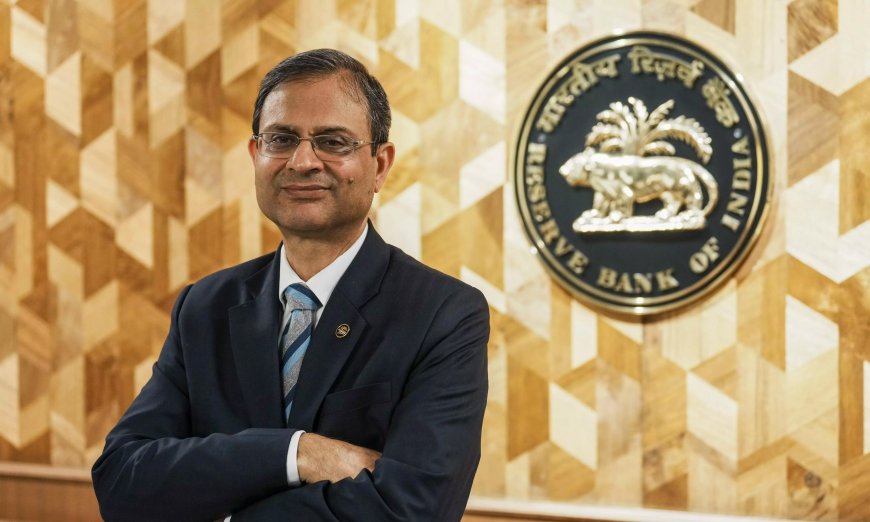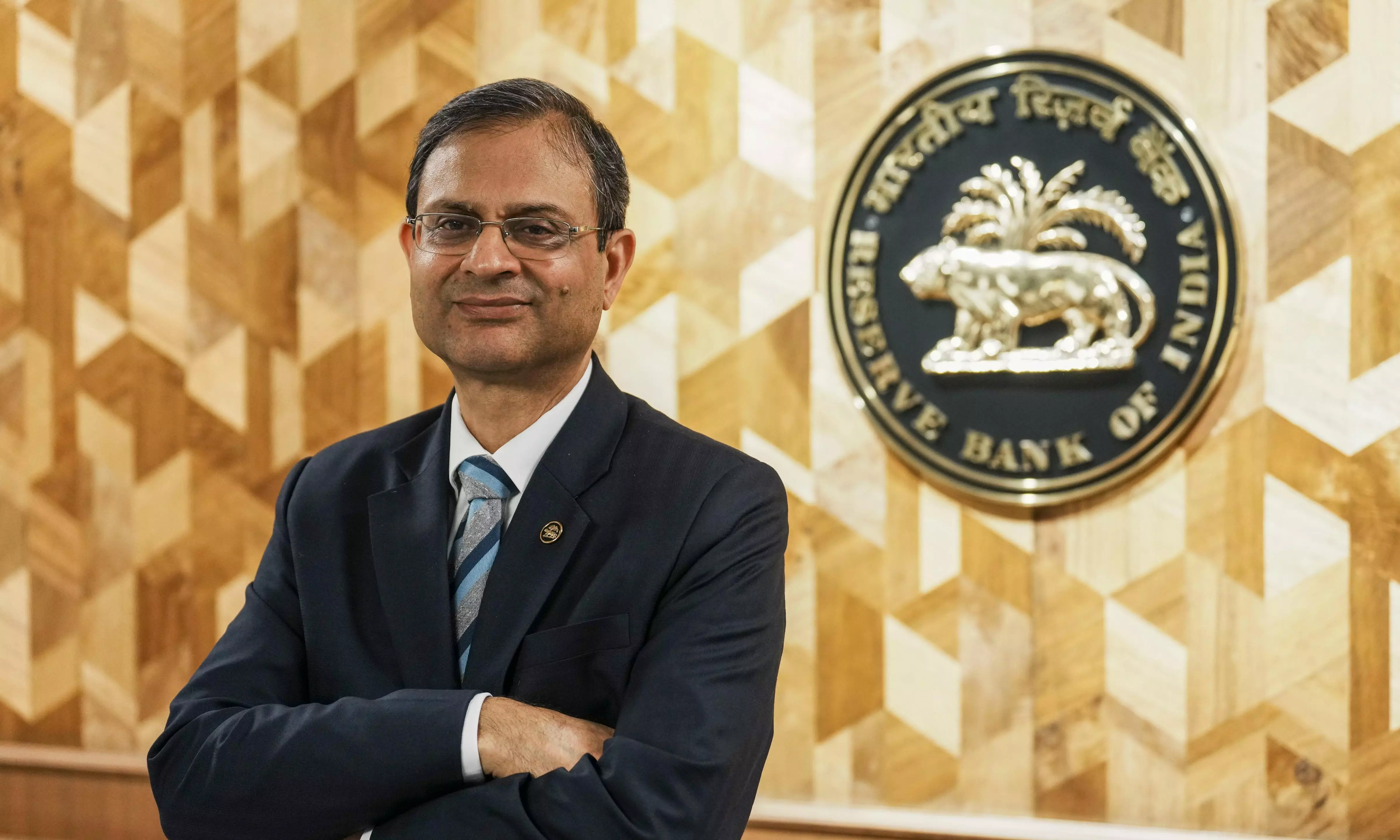Prospects for Indian Economy Improving Says RBI Gov
Mumbai: Amidst an uncertain global macroeconomic and financial environment, the Indian economy is exhibiting resilience and stability with the Gross Domestic Product (GDP) projected to grow at 6.6 per cent in 2024-25. The growth would be aided by the revival in rural consumption, pickup in government consumption and investment and strong services exports said the Reserve Bank of India’s (RBI) Financial Stability Report December 2024 released on Monday. In his foreword to the Report RBI Governor Sanjay Malhotra wrote, “Notwithstanding the uncertainties shrouding the global macrofinancial ethos as it unfolds, prospects for the Indian economy are expected to improve after the slowdown in the pace of economic activity in the first half of 2024-25. Consumer and business confidence for the year ahead remain high and the investment scenario is brighter as corporations step into 2025 with robust balance sheets and high profitability.” The Financial Stability Report (FSR) is a half-yearly publication, with contributions from all financial sector regulators. It presents the collective assessment of the Sub Committee of the Financial Stability and Development Council on current and emerging risks to the stability of the Indian financial system The underlying growth momentum remains strong and is supported by the steadfast focus of monetary policy on a durable alignment of inflation to the target. A stable financial system, bolstered by healthy balance sheets and profitability of banks and non-banks and reasonable expansion in credit, is providing support to businesses and households, said the report. However, vulnerabilities in the form of stretched equity valuations, pockets of stress in the microfinance and consumer credit segments and risks from external spillovers require close monitoring, warned the RBI. During H1:2024-25, real GDP growth (y-o-y) moderated to 6 per cent from 8.2 per cent and 8.1 per cent growth recorded during H1 and H2 of 2023 24, respectively. “Despite this recent deceleration, structural growth drivers remain intact," said the RBI. Real GDP growth is expected to recover in Q3 and Q4 of 2024-25 supported by pick up in domestic drivers, mainly public consumption and investment, strong service exports and easy financial conditions” it said. On the downside, the softness in industrial activity, especially in the manufacturing sector, moderation in urban demand, global spillovers and protective trade and industrial policies pose risks to the outlook. On inflation, the report said the disinflationary effect of a bumper kharif harvest and the rabi crop prospects are expected to soften prices of foodgrains. The consumer price index (CPI) inflation had risen beyond the upper tolerance level to 6.2 per cent in October 2024 due to a rise in food prices but fell to 5.5 per cent in November due to some softening of food prices and favourable base effect. Going forward, on the flipside, the rising frequency of extreme weather events (e.g., heat waves and unseasonal rains) continues to pose risks for food inflation dynamics. Persisting geopolitical conflicts and geo-economic fragmentation can also impose upside pressures on global supply chain and commodity prices.


Mumbai: Amidst an uncertain global macroeconomic and financial environment, the Indian economy is exhibiting resilience and stability with the Gross Domestic Product (GDP) projected to grow at 6.6 per cent in 2024-25. The growth would be aided by the revival in rural consumption, pickup in government consumption and investment and strong services exports said the Reserve Bank of India’s (RBI) Financial Stability Report December 2024 released on Monday.
In his foreword to the Report RBI Governor Sanjay Malhotra wrote, “Notwithstanding the uncertainties shrouding the global macrofinancial ethos as it unfolds, prospects for the Indian economy are expected to improve after the slowdown in the pace of economic activity in the first half of 2024-25. Consumer and business confidence for the year ahead remain high and the investment scenario is brighter as corporations step into 2025 with robust balance sheets and high profitability.”
The Financial Stability Report (FSR) is a half-yearly publication, with contributions from all financial sector regulators. It presents the collective assessment of the Sub Committee of the Financial Stability and Development Council on current and emerging risks to the stability of the Indian financial system
The underlying growth momentum remains strong and is supported by the steadfast focus of monetary policy on a durable alignment of inflation to the target. A stable financial system, bolstered by healthy balance sheets and profitability of banks and non-banks and reasonable expansion in credit, is providing support to businesses and households, said the report.
However, vulnerabilities in the form of stretched equity valuations, pockets of stress in the microfinance and consumer credit segments and risks from external spillovers require close monitoring, warned the RBI.
During H1:2024-25, real GDP growth (y-o-y) moderated to 6 per cent from 8.2 per cent and 8.1 per cent growth recorded during H1 and H2 of 2023 24, respectively. “Despite this recent deceleration, structural growth drivers remain intact," said the RBI. Real GDP growth is expected to recover in Q3 and Q4 of 2024-25 supported by pick up in domestic drivers, mainly public consumption and investment, strong service exports and easy financial conditions” it said. On the downside, the softness in industrial activity, especially in the manufacturing sector, moderation in urban demand, global spillovers and protective trade and industrial policies pose risks to the outlook.
On inflation, the report said the disinflationary effect of a bumper kharif harvest and the rabi crop prospects are expected to soften prices of foodgrains. The consumer price index (CPI) inflation had risen beyond the upper tolerance level to 6.2 per cent in October 2024 due to a rise in food prices but fell to 5.5 per cent in November due to some softening of food prices and favourable base effect.
Going forward, on the flipside, the rising frequency of extreme weather events (e.g., heat waves and unseasonal rains) continues to pose risks for food inflation dynamics. Persisting geopolitical conflicts and geo-economic fragmentation can also impose upside pressures on global supply chain and commodity prices.






































